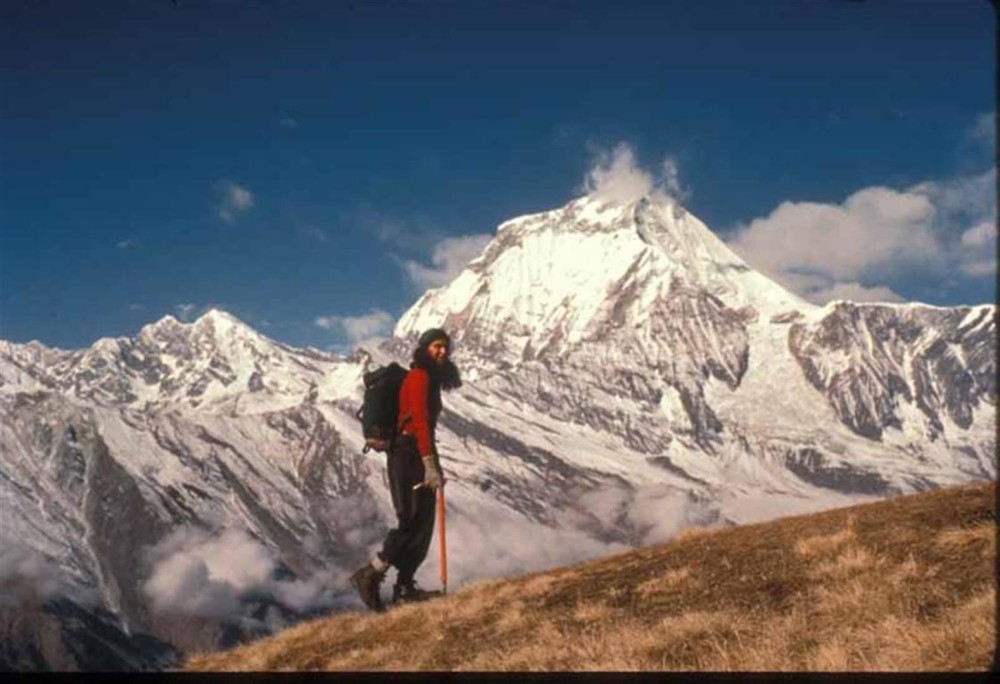By Marc Lifsher
Los Angeles Times
The gig: Arlene Blum is a California scientist, educator, author and an international mountain climber. Her work has helped eliminate dangerous fire retardants from children’s pajamas and foam furniture. She has a doctorate in biophysical chemistry from UC Berkeley and she runs a research and educational institute in Berkeley that provided much of the data that persuaded policy makers to revise state fire regulations to reduce the need to infuse cushions with toxic chemicals.
Blum, 69, of Berkeley also is a renowned — but mostly retired — alpinist. In 1978, she led the first American climbing expedition aiming for the summit of one of the world’s most difficult and dangerous peaks, Annapurna I in the Himalayan mountains of Nepal.
Restrictive upbringing: Blum was born in Davenport, Iowa, and moved to Chicago at age 5 with her divorced mother and grandparents. Her family was overprotective and repressive, she said. “I wasn’t allowed to ride horses and go to public beaches. My earliest memory was sitting under the porch on a hot day and hearing my aunt say you’ll amount to nothing,” she recalled.
Chemistry awakening: By fate, Blum discovered her life’s two principal passions at Reed College in Oregon.
One instructor was a 23-year-old woman with a doctorate in chemistry. “She so inspired us” that all four girls in the class later earned doctorates in chemistry, she said. A love of mountaineering sprang up after Blum fell in love with her lab partner, “a handsome, young man from Portland, who one starry night while studying chemistry asked me if I wanted to climb Mt. Hood, and I said, sure.”
The upshot, Blum said, is “I fell in love with mountain climbing and him.” Blum and John Hall remained friends until his death in a Yukon Territory avalanche in 1971.
Endless winter: After earning her doctorate, Blum got a new inspiration watching a popular surfing film, “Endless Summer.” The Bruce Brown movie was about a pair of surfers who circled the globe, looking for the perfect wave. “I decided to have an endless winter by going around the world looking for the perfect mountain,” she said. “I became a skilled climber” at age 26.
Big mountains: Following her year of wandering, Blum started post-doctorate research at Stanford into the health effects of now-banned flame retardants in kids’ sleepwear. Meanwhile, she was selected as the first American woman to join an expedition to climb Mt. Everest. She made it as high as 24,500 feet on the planet’s tallest peak but wasn’t selected to push for the summit.
Two years later, she organized a team of 14 women to ascend 26,200-foot Annapurna I, which has the greatest fatality rate of the world’s 14 highest mountains with more than 52 deaths.
Two of the women and two Sherpa guides made it to the top, but two other women fell to their deaths. “We don’t know what happened,” said Blum, who didn’t reach the summit. “You lose your focus for a minute. There’s a slip, an avalanche.”
Author: Blum has published two award-winning books: “Annapurna: A Women’s Place” and her autobiography, “Breaking Trail: A Climbing Life.”
Mother: The birth of a daughter, Annalise, in 1987, caused Blum to scale back her mountain climbing. “Since I became a mom, I haven’t done anything life-threatening,” she said. “I did a little peak in Poland last September.” While raising Annalise as a single mom, she concentrated on writing “Breaking Trail,” running an adventure travel business and providing leadership training for Silicon Valley executives.
Back to science: Blum returned to science in 2007, when she founded and became executive director of the Green Science Policy Institute, a nonprofit think tank in Berkeley that educates consumers and policymakers about how to reduce toxins in furniture, baby products, electronics and other household goods.
In 2011, she became a visiting scholar in chemistry at UC Berkeley. Blum’s and the institute’s most significant achievement, to date, was providing research and experts that helped spur a decision by Gov. Jerry Brown to order a change in California furniture flammability standards. New regulations are expected to reduce levels of harmful chemicals in homes and offices.
Life’s lesson: Vision and a good team are the keys to success, whether it’s climbing a mountain or making furniture safer, Blum said. “You go slowly up the mountain, step by step,” she said. “There are storms and avalanches, but you keep plodding up the mountain to make it to the top.”














































































































































































































































































































































































